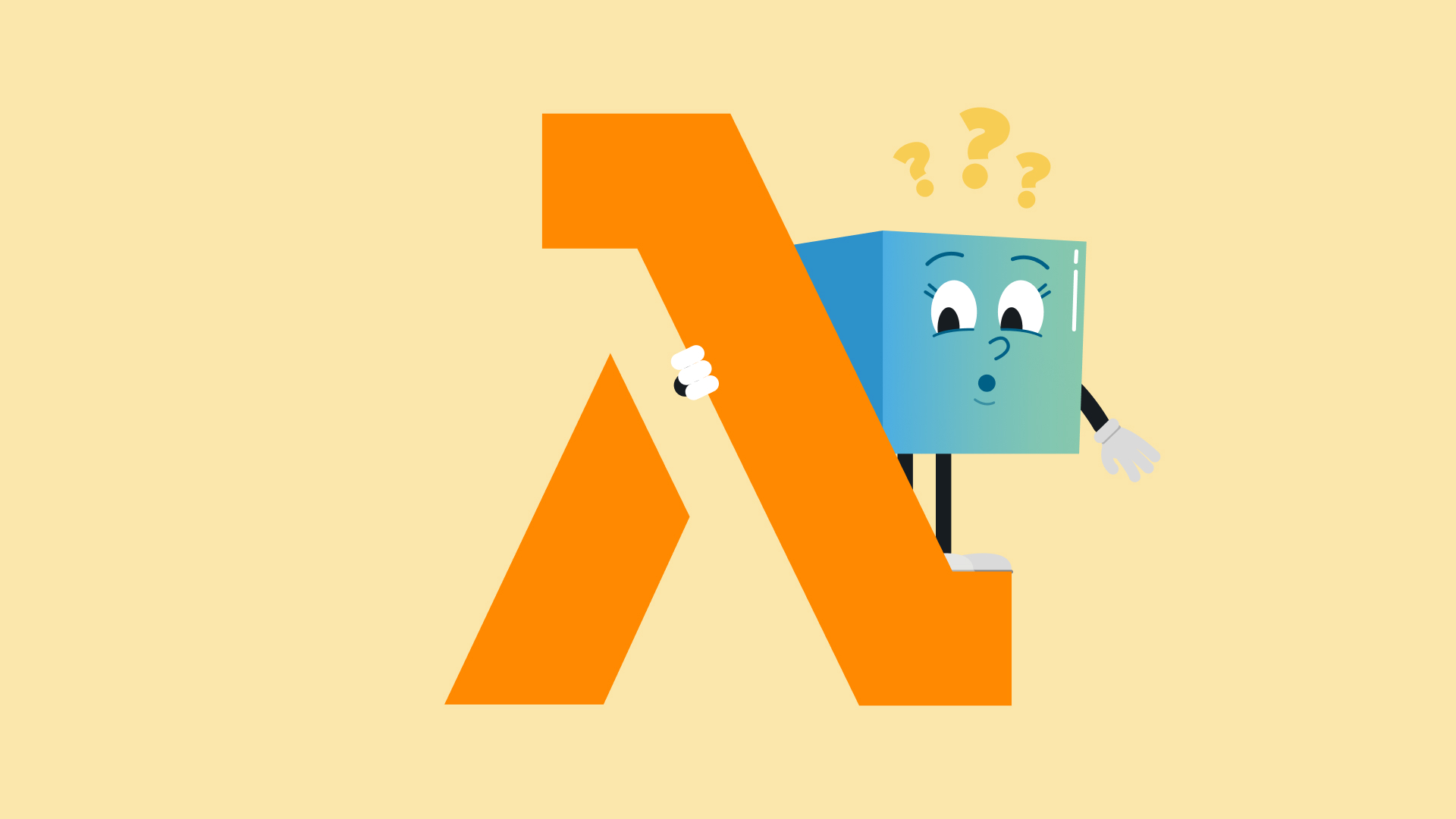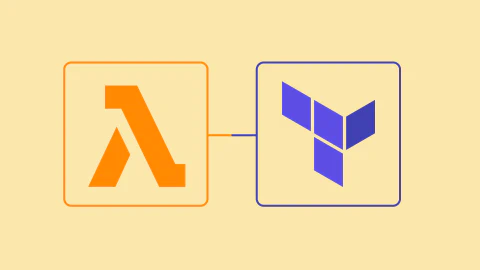Serverless computing enables you to build and run applications and services without the need to manage infrastructure. With serverless computing, you can focus on writing and deploying your code without worrying about setting up and maintaining servers. However, serverless does not mean that there are no servers involved in running your code. It just means that the servers, operating system, and the rest of the infrastructure is managed for you so you don’t have to worry about it.
Amazon Web Services (AWS) offers a serverless computing service called AWS Lambda. AWS Lambda is part of the AWS cloud computing platform, which also includes services such as Amazon Elastic Compute Cloud (EC2) and Amazon Simple Storage Service (S3). When you write your code and upload it to AWS Lambda, the service will automatically run and scale the code in response to incoming requests and events.
In this article, you will learn more about AWS Lambda: how it works, the benefits of using it, and the limitations you’re likely to encounter. You’ll also be equipped with some tips to help you decide when to use AWS Lambda and when not to use it.
How Does AWS Lambda Work?
With an AWS account, you can create Lambda functions either by uploading your code to AWS Lambda or by writing the code directly in the Lambda code editor provided in the AWS management console. AWS Lambda lets you write functions with a range of programming language runtimes including Node.js, Python, Java, and Go. When you create a function, AWS Lambda automatically packages, deploys, and runs your code in its own container on a compute resource such as an EC2 instance. AWS Lambda can concurrently execute many instances of the same function or of different functions from the same AWS account. This concurrent execution of functions enables AWS Lambda to handle varying amounts of traffic.
AWS Lambda functions are triggered by events, meaning that the service runs your code when a particular event occurs. Some examples of events that could trigger your AWS Lambda function include HTTP requests, messages from Internet of Things (IoT) devices, and changes in a database. For instance, if you are building a serverless web application, you could use AWS Lambda to run your application code in response to incoming HTTP requests. In this scenario, when a user makes a request to your web application, the request is routed to AWS Lambda, which then runs your code to generate and return a response to the user. You can choose from a variety of triggers that will invoke your function. For example, you could configure a trigger that invokes your function whenever a new object is added to an S3 bucket.
Benefits of Using AWS Lambda
AWS Lambda offers a range of benefits, including cost savings, improved scalability, and flexible deployment options.
Pay Per Use
With AWS Lambda, you pay only for the time that your function actually runs—that is, you only pay for the compute resources that your code uses. For instance, if your function runs for one second and processes 1000 requests, you will only pay for 1000 seconds of execution time. You do not have to pay for any time during which your function is not running or for the underlying infrastructure that runs your code. This pay-per-use pricing model could help you save money compared to running your own servers or using a service that requires you to pay a fixed fee regardless of the amount of compute resources you actually consume.
Easy to Associate Functions with Events
The events you can set up to trigger your code’s execution can come from a variety of sources, including HTTP requests and other AWS services. Since AWS Lambda makes it easy to tie functions to events, you can build cost-effective, event-driven applications that automatically respond to changes in your data or environment.
Fully Managed Infrastructure and Automatic Scaling
Since AWS Lambda allows you to run your code without managing infrastructure or scaling anything yourself, your application will be able to handle sudden spikes in traffic without requiring you to manually provision additional resources. You do not have to worry about capacity planning, overprovisioning, or underprovisioning—you can simply focus on writing code and solving business problems at scale.
Seamless Integration with AWS Services
AWS Lambda integrates seamlessly with other AWS services such as Amazon S3, Amazon Kinesis, Amazon DynamoDB, and many other AWS services. Thus, you can use AWS Lambda to build event-driven serverless applications with the full range of AWS services. For example, you can combine AWS Lambda with Amazon API Gateway to create a Hypertext Transfer Protocol (HTTP) endpoint for your Lambda function. You can also use it to access data stored in an Amazon DynamoDB table or to invoke an AWS step function. Furthermore, AWS Lambda enables you to easily implement secure authentication and authorization via AWS Identity and Access Management (IAM).
Limitations of AWS Lambda
While AWS Lambda provides many benefits, there are also some limitations to using the service.
Cold Start Time
AWS Lambda functions run within an execution environment that is created based on the memory and runtime configurations you have specified. AWS Lambda also needs to import dependencies and initialize connections to other services as a part of the initialization process for your function. If you invoke a function for the first time, or if you invoke the function after an extended period of time has passed since the last invocation, AWS Lambda needs to create the execution environment and complete the initialization process upon receiving the invocation request. The process of setting up the environment and executing initialization code before executing a function is often referred to as a cold start.
To reduce the number of cold starts, AWS Lambda retains the execution environment of a function for an unspecified period of time so that subsequent invocations of the function can reuse the existing environment without creating and initializing a new one. The process of executing a function by reusing an existing environment is often referred to as a warm start.
Cold starts can cause delays in the execution of your functions because of the time it takes to set up the infrastructure needed to run your code. Consequently, long cold start times could make it difficult to rely on AWS Lambda in situations where low latency is a critical requirement.
There are several factors that could affect the cold start time of your functions. In general, cold start times are typically higher for larger functions and functions that use many third-party libraries. Some ways to minimize the impact of cold start times include keeping your function code small, using as few third-party libraries as possible, and keeping your function warm by scheduling regular invocations.
Function Limits
AWS Lambda imposes several limits on your functions. For instance, functions have a maximum time-out of fifteen minutes, which means that your function will be terminated if it runs any longer than that. This fifteen-minute limit could become a problem if you have long-running tasks or processes that require a significant amount of time to be completed. There are also limits applied to the amount of memory available to your functions, the size of code that you can upload to AWS Lambda, and the number of function instances that can be concurrently executed within a single AWS account.
Limited Set of Supported Runtime Environments
Another limitation of AWS Lambda is that there are restrictions on the environment and runtime that your code can use. For example, you can only use certain versions of specific programming languages, and you are limited to using certain libraries and dependencies. This could make it difficult for you to use AWS Lambda for applications that require custom and/or uncommon runtime environments or dependencies.
Not Always Cost-Effective
AWS Lambda may not be cost effective if you have many long-running tasks, a high and constant volume of requests, or a large amount of data to process. As the resource usage of your application increases, it is important to carefully evaluate your needs and requirements to determine whether the eventual cost of AWS Lambda is lower than the cost of similar infrastructure on EC2 or some other cloud provider.
Troubleshooting Difficulties
Finally, since AWS Lambda fully manages the underlying infrastructure for you and automatically adjusts resource allocation to meet the needs of your application, you do not have direct control over the underlying infrastructure or insight into the specific execution conditions of your code. Because of this limited control and insight, it may be difficult for you to reproduce errors and understand what caused them.
When to Use AWS Lambda
AWS Lambda is a powerful tool for building different types of applications and solving business problems, especially when you don’t want to worry about managing servers and allocating resources. Here are a few specific instances where using AWS Lambda may be a good idea.
Building Scalable Web and Mobile Applications
As noted previously, AWS Lambda is particularly well suited for applications that require high scalability, such as web and mobile applications that may experience sudden spikes in traffic. Since AWS Lambda automatically allocates resources to match the needs of your application, your web and mobile applications will be able to adjust to these spikes without requiring any intervention from you.
Event-Driven Task Automation
Since AWS Lambda is well suited for automating specific tasks that need to happen in response to an event, you can use it for things like automatically resizing images or transcoding video files when new images or video files are added to an Amazon S3 bucket.
Proxy for External Services
You should also consider using AWS Lambda if you need a layer between your application and an external service for security, rate limiting, caching, or data transformation purposes. For example, you could use AWS Lambda (in combination with other services) to cache responses from external services and reduce the number of requests made to the external service. You could also use it to transform data received from external services into a format that is more suitable for your application.
Real-Time Data Processing
Finally, AWS Lambda is well suited for real-time data processing (as long as the data processing requirements fall within the time and compute resource limits of AWS Lambda). Because Lambda functions are triggered by events, you can use it to process data in real time, as soon as it becomes available. For example, you can combine AWS Lambda with Amazon Kinesis to process real-time streams of log data as it is ingested into Kinesis.
When Not to Use AWS Lambda
There are also times when AWS Lambda may not be a suitable choice. Here are a few examples where you should consider other alternatives that might provide better outcomes.
Orchestrators and Mediators
AWS Lambda is not a suitable choice if your goal is to write and deploy code that calls other services and coordinates work among them. Using AWS Lambda for this sort of orchestration work will potentially cause your function to spend significant idle time waiting for downstream services to perform their own work. This idle time could lead to increased costs that could be avoided by moving such orchestration work to a more suitable service like AWS Step Functions.
Simple Data Transportation
If your goal is simply to transport data from one service to another without performing any business logic or extensive transformations, then it may be better to directly integrate the two services instead of putting an AWS Lambda function between them. By integrating services directly, you could avoid the extra cost and overhead that comes with using an AWS Lambda function that you don’t need.
Complex/Long-Running Tasks
It may also be best to avoid AWS Lambda if you need to execute complex or long-running tasks. AWS Lambda is designed to handle short-lived, low-latency functions. It is not well suited for long-running tasks due to several factors, including function execution time limits. Furthermore, AWS Lambda’s pay-per-use pricing model will cause you to incur higher costs if your tasks take a long time to complete. For complex and/or long-running tasks, a traditional server-based solution may be a better fit, as it can provide you with more flexibility and control over the runtime environment. If you need a serverless way to execute complex or long-running tasks, consider using AWS Fargate.
Real-Time Communication
AWS Lambda, by itself, is not designed to support real-time communication between clients and servers. Attempting to use it for this purpose could cause you to incur significant costs since you’ll need to maintain a long-lasting connection. If you need to build a real-time communication system, you may want to consider using a different technology such as WebSockets.
Custom Runtime Environments and Dependencies
If your application requires a custom runtime environment or atypical dependencies, AWS Lambda may not be a good choice due to the restrictions it imposes via a limited set of supported runtime environments and dependencies. In these cases, a traditional server-based solution may be a better fit, since it will provide you with the flexibility necessary to set up the custom environment necessary for your needs.
Conclusion
In this article, you have learned what AWS Lambda is, how it works, and some of its benefits and limitations. Then you explored some specific scenarios where it may be a good idea to use AWS Lambda, as well as some situations where it’s probably best to explore other alternatives.
It’s important to carefully evaluate the requirements of your application and choose an appropriate service or solution. With careful planning and consideration of your use case, AWS Lambda can be a powerful tool for building scalable, reliable, and cost-effective applications and services.
















